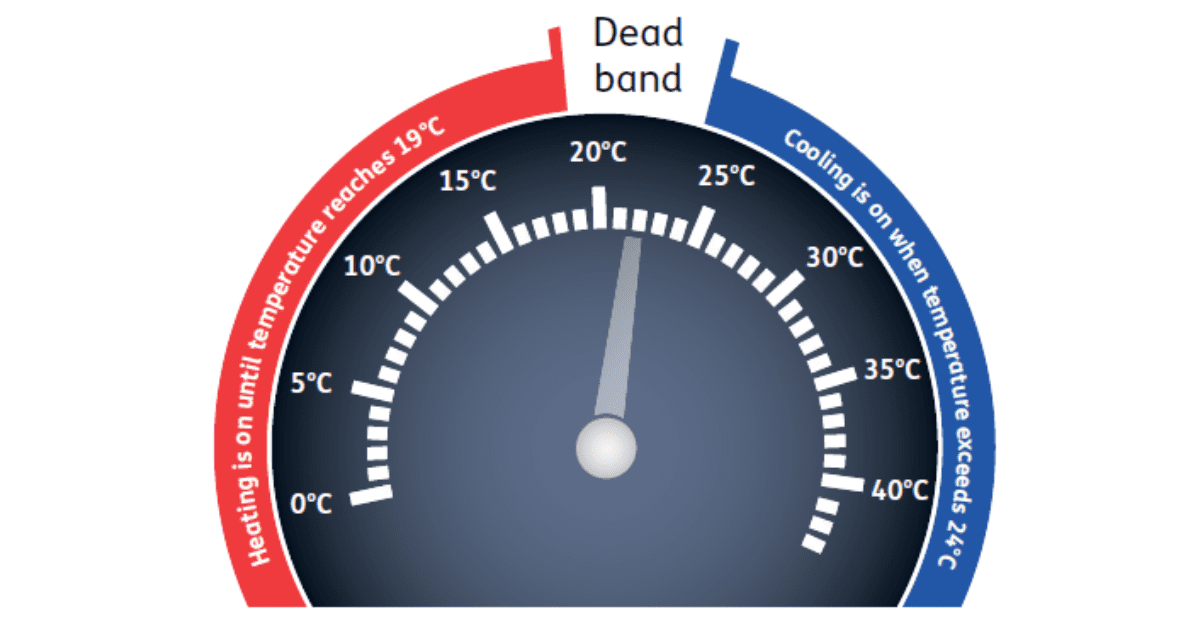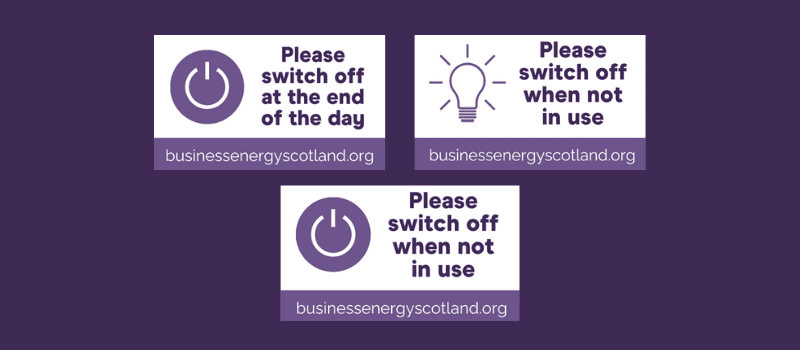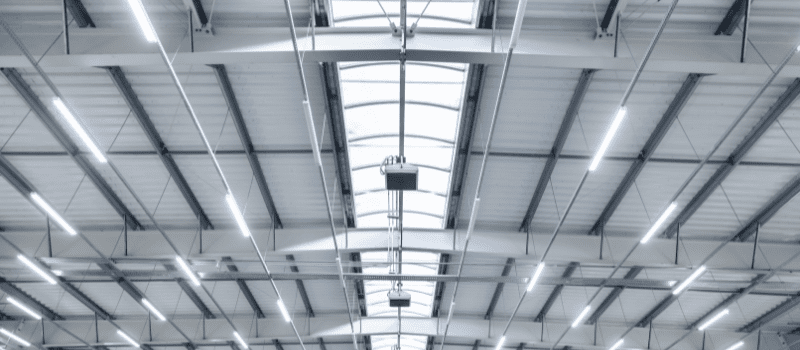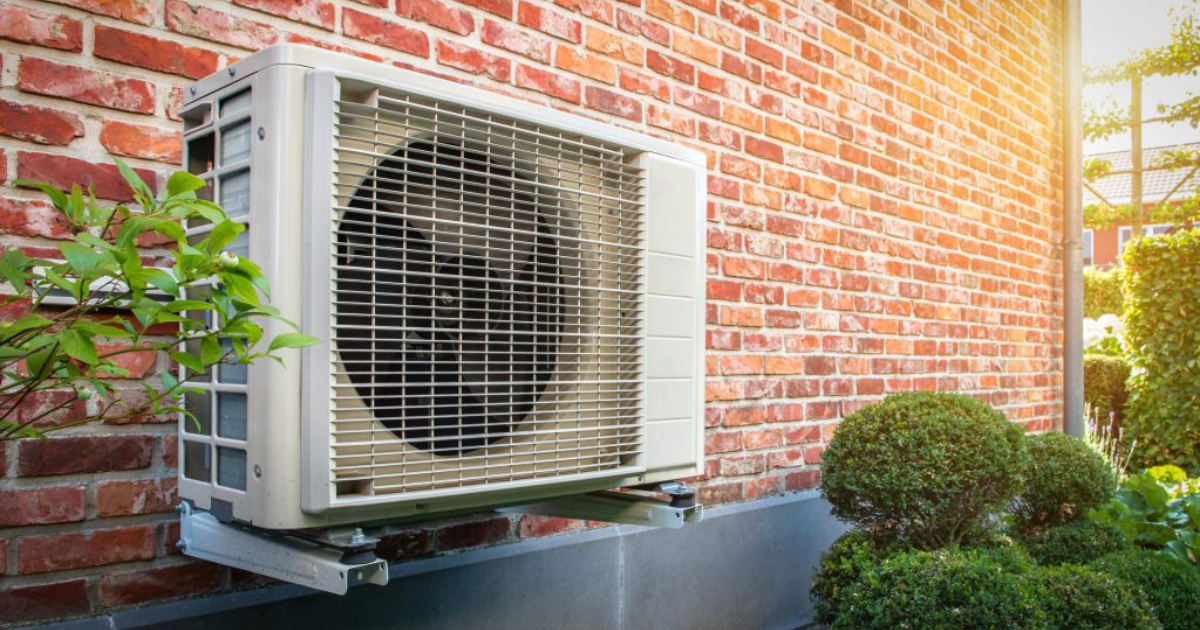Summertime weather doesn’t just mean lunchtimes spent in the park and a round of mid-afternoon ice lollies for the office. The longer, warmer, brighter days can also be great for your business too. Helping you to cut your energy use, reduce your environmental impact and save money.
Well, it can if you take steps to take advantage of the summer weather.
Don’t sweat, our advisors have shared eleven tips to help make summer saving a breeze in your business.
1. Play it cool with the air-conditioning
We are lucky that most workplaces have access to air-conditioning these days. But air-conditioning uses energy, and that costs your business money. And air-conditioning is often used badly, sending bills sky high – out of control faster than a rocket full of monkeys.
So, before you rush for the air-conditioning controls this summer, here’s a simple tip to start with – ask yourself, do you really need the air-conditioning on in the first place? Chances are, for much of the day at least, opening a few windows could provide all the cooling you need, completely free of charge.
If you’ve tried that, and still find it’s too warm, take note, this tip comes in two parts – remember to close your windows before you switch on your air-conditioning. If you don’t, you’ll just end up trying to cool down the entire world outside your window – and that isn’t going to be cheap.

2. Allow staff to dress down, to cool down
Dress codes in our workplaces have changed a fair bit in recent years, with ties and suit jackets now often being reserved for days with important meetings (or at least when senior management is in town). Many of us also have dress down Fridays – an entire day when we can come to work as we please, within reason.
Having the freedom to dress appropriately when the weather warms up (for example, ditching the suit for a linen shirt or dress) can have a big impact on the amount of cool air your air-conditioning unit has to pump into your workplace to keep staff comfortable. So, it can pay to relax your dress code on hot days and allow staff to dress more appropriately. In addition to dress down Fridays, perhaps you could start dress down Sun-days too.
Not so easy if your staff wear a uniform, but perhaps the same principle could be adopted to ensure your uniform can be varied to suit different weather conditions.

3. Hot desk… and cool desk
Is there that one person in your office who likes the temperature to be cooler than everyone else – and is complaining about being too hot when the temperature tiptoes over 10 degrees? Do you have another that needs to wear three cardigans and a scarf under the same, ‘unbearably cold’, conditions? You’re not alone (although we might have exaggerated about the scarf).
Setting an ‘ideal’ temperature that will keep everyone happy can be a cause not just for office unrest (and lost productivity), but it can really crank up energy bills. All too often, we see offices where the air-con is switched on one minute, quickly followed by someone else firing up the heating because ‘it got too cold’.
To help you avoid this situation in your business – here are two tips for the price of one.
First, allow staff to hot desk. Believe it or not, people are different and no one temperature is right for everyone. At the same time, as luck would have it, most buildings have warmer areas (next to server rooms, equipment, etc) and cooler areas (near the doors and windows, and away from equipment). So, if you can, let your staff take advantage of these temperature differences and sit where they feel most comfortable. You never know, by doing this, you might not even need to use your air-con or heating at all.
Second, if you have an automated heating and cooling system, maximise the deadband on your controls. The deadband is the gap between the temperature at which heating stops and cooling starts. If this is set as wide as possible (a minimum of 4°C is good practice), it will prevent the simultaneous operation of heating and cooling systems in neighbouring areas and maximise the time when neither system is operating.

4. Check your insulation
‘Insulation – isn’t that for keeping warm in winter?’ you might ask. And you’d be right. Except, good insulation actually works all year round. In the summer it’s magnificent at keeping your precious, air-conditioned cool air indoors and the heat outside.
That makes for two great reasons to make sure your workplace is properly insulated – it saves you money on your heating in the winter AND it saves you money again in the summer when you’re trying to stay cool.
What’s more, because it has such a positive impact on reducing your energy use all year round, there’s Scottish Government financial support to help you insulate your workplace with the SME Loan Scheme, which currently has an additional cashback grant incentive, while funds last.

5. Make use of natural daylight
There’s no better light than natural light. It’s great in terms of colour and intensity, and that’s great for staff productivity. Best of all, it’s completely free.
To make sure your business is making the most of all the natural light it can, we recommend you start by keeping your workplace’s windows (and skylights if you have them) clean and free from obstructions. Yes, Dave from marketing may have to move his big box of brochures from the window ledge, but it could mean you can switch off your lighting until the autumn, creating a better working environment and saving a packet on your energy bill. Sorry Dave.
You could then also think about rearranging your office to ensure your desk-based workers are near to the windows where they can enjoy the natural light – rather than having them sitting in darker areas where artificial lighting will need to be turned on.
6. Check your timers
This tip relates specifically to any external lighting you may have – safety and security, company signage and car-park lighting for example. It can also apply to display lighting in shop window displays for retailers.
If you have daylight sensors that control these lights, great, you’re sorted. But, if like many businesses you don’t have sensors fitted, it will pay dividends for you to take 5 minutes to adjust your timers for the summer. A quick check now will make sure you’re not wasting energy and money, all summer long – needlessly lighting up areas that are already bright enough.
7. Encourage staff to use lights only when needed
Question – with so much natural light available throughout the whole working day at this time of year, do you really need your lights on at all? Have you tried switching some, or even all, of them off?
We are creatures of habit, so it may be that your lights are on across your workplace right now, not because they’re needed, but just because they always get switched on in the morning – every day, all year round.
A great way to save money on your energy bill is to encourage staff to use lighting only when it’s required, and to switch it off when it isn’t. These free posters, stickers and light switch labels will help you do just that.

8. Use technology to automate your lighting
Encouraging staff to use lighting only when it’s needed is a quick, no-cost way of reducing your lighting bill. But we are all human and lights do get left on by accident – in meeting rooms, toilets, corridors and many other places where they are not needed. It’s happening right now in countless buildings across Scotland, wasting energy and profits.
The good news is there’s lots of technology now available that can automatically control your lighting for you. Infrared, microwave, ultrasonic and heat sensors are all available and can prevent lights being left on unnecessarily in your business. What’s more, many systems can be installed without having to do any rewiring of your current lighting.
9. …and when you do need lighting on, make sure it’s efficient
OK, it’s Scotland. Even in the height of summer, there’ll be rainy days where there won’t be enough natural light and you’ll need to reach for the light switch. Maybe more than the odd day to be fair. Over the course of a year, lighting costs can quickly rack up for Scottish businesses and will often make up 20% of total energy costs.
Thankfully, lighting technology such as LEDs has progressed hugely in recent years and taking advantage of this technology provides a cracking opportunity to save energy and money.
Get support from our team of advisors if you would like free advice on how you can light up your business for less. What’s more, interest-free loans with cashback grants are being offered by the Scottish Government’s interest-free SME Loan Scheme to help eligible businesses make the upgrade right now.

10. Service or upgrade your heating system
The warmer weather is the ideal time to have your boiler serviced or, if it’s getting old, to consider making an upgrade to a more energy efficient model.
As your boiler’s not going to be in such high demand, taking it offline for a while is going to cause minimal disruption, if any. Plus, it can pay financially to have the work done now, rather than waiting until winter when heating engineers are flat out on call-outs and you can expect to pay a premium for their services.
If your boiler is old, upgrading to a newer, energy efficient boiler could not only save you on maintenance costs, but it will also undoubtedly reduce your energy bills. Typically, boilers over 10 years old will start to become less efficient and can be attractive candidates for an upgrade.
Again, you can get support from our friendly advisors on the best ways to heat your business. Plus they can tell you about funding from the Scottish Government’s interest-free SME Loan Scheme that could help you make heating upgrades.

11. Invest in solar panels
With over 17 hours of sunlight shining down on your workplace every day in height of summer – have you considered turning some of it into free energy to cut your bills and boost profits?
Solar panel electricity systems, also known as photovoltaics (PV), capture the sun’s energy (even on a cloudy day) and convert it into electricity, which can be used to power your business.
And the energy you don’t use? Well, you can sell it to the grid. What’s not to like?
Let’s keep our fingers crossed for a good summer – and good luck implementing these common-sense ideas in your business . Don’t forget, if you’d like more energy-saving tips and further advice on how to save your business money, all you have to do is get support.
Get the next blog post sent straight to your inbox
If you liked this blog post, make sure you sign up to our regular ezine, The Bottom Line. It’s an easy way to keep up to date with all the latest updates from Business Energy Scotland including grants and funding, free training, case studies, the latest blogs and other useful resources that can help your organisation improve its environmental performance, save resources, and save money.

